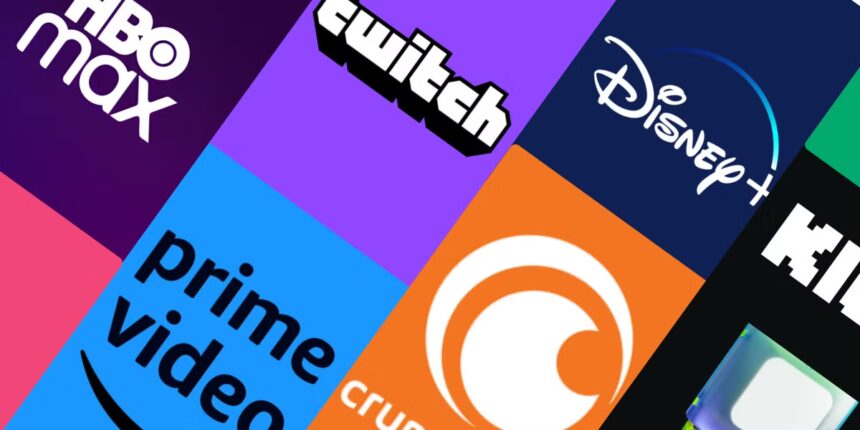The anime industry has undergone a massive transformation over the last decade. Once confined mainly to Japanese TV networks and limited DVD releases, anime is now a global entertainment powerhouse.
Platforms such as Netflix, Crunchyroll, and Amazon Prime Video have revolutionised how anime is distributed, consumed, and even created.
According to recent industry reports, the global anime market surpassed $35 billion in 2024 and is projected to exceed $100 billion by 2035. This growth is largely driven by streaming platforms offering global audiences instant access to new anime series.
From Regional Broadcasts to Global Simulcasts
Before the rise of streaming, anime distribution followed a slow and fragmented process: Japanese TV broadcasts came first, followed by international releases via DVDs or fan-subbed content months (or even years) later.
Platforms like Crunchyroll changed that model through simulcasting — allowing fans outside Japan to stream episodes within hours of their domestic broadcast.
This innovation eliminated long regional delays and significantly reduced piracy.
Meanwhile, Netflix pushed further with its “global-first” model — producing anime that premieres simultaneously in over 190 countries. Titles like Devilman Crybaby, Yasuke, and Castlevania were designed from the start for international audiences.
Licensing and Platform Exclusives
The merger of Funimation and Crunchyroll under Sony in 2021 consolidated a massive anime catalog under one corporation. This shift gave Sony a powerful position in anime licensing and distribution, altering the flow of profits between studios, producers, and international markets.
Netflix followed a different strategy: instead of just licensing, it began funding original productions. When Netflix commissions an anime, it often covers full production costs — but retains exclusive global rights.
While this gives creators more funding security, it can also mean stricter creative control and limited regional sublicensing opportunities for studios.
Breaking Language Barriers
One of the biggest benefits of streaming is the rapid localisation of anime.
Netflix and Crunchyroll release multi-language subtitles and dubs — sometimes simultaneously — in over 10+ languages, including English, Spanish, Hindi, and French.
High-quality dubs are no longer afterthoughts; they’re marketing tools that make anime accessible to wider audiences. This has expanded anime’s fan base far beyond Japan, helping shows like Demon Slayer, Attack on Titan, and One Piece reach unprecedented global success.
How Analytics Shape Storytelling
Streaming platforms thrive on data. Viewer metrics such as watch time, completion rates, and genre preferences influence green-lighting decisions and creative direction.
This data-driven approach helps producers understand what resonates globally — for example, the continued dominance of isekai and dark fantasy genres.
However, it also introduces challenges. Critics argue that over-reliance on analytics can lead to formulaic storytelling, where originality takes a backseat to algorithms.
Creative Implications for Anime Studios
1. Shift from Episodic to Binge-Friendly Storytelling
With most anime now released in full-season drops, creators design episodes with strong cliffhangers and narrative pacing optimized for binge-watching.
2. Global Audience in Mind
Anime is no longer made solely for domestic fans. Studios increasingly include multicultural characters, universal themes, and globally appealing art styles.
3. New Funding Models
The traditional production committee system (multiple Japanese companies sharing costs) is being replaced by direct commissioning. This allows greater creative freedom, but also concentrates power among a few streaming corporations.
4. Localisation as Creative Strategy
Translation teams now work closely with writers to ensure cultural nuances are preserved. For example, puns, honorifics, and idioms are adapted instead of being directly translated.
5. Labour and Ethical Challenges
As demand rises, anime studios face tight production schedules and low wages for animators. Streaming companies have the resources to change this, but sustainable collaboration remains an ongoing issue.
Netflix vs. Crunchyroll
| Platform | Strategy | Example Titles | Distinct Impact |
|---|---|---|---|
| Netflix | Commission global anime originals and co-productions | Devilman Crybaby, Cyberpunk: Edgerunners | Introduced “global-first” releases and international collaborations |
| Crunchyroll | Specialize in anime distribution, simulcasting, and merchandise | Jujutsu Kaisen, Chainsaw Man | Strengthened anime ecosystem through community engagement and simulcasts |
Both platforms complement each other — Netflix expands anime’s reach to new viewers, while Crunchyroll deepens fandom engagement and supports industry events like the Crunchyroll Anime Awards.
Future of Anime Streaming
Looking ahead, the anime landscape will continue to evolve around three core trends:
- Increased platform consolidation — Sony’s dominance through Crunchyroll and competition from Netflix will shape the next decade.
- AI-assisted animation — tools for background generation and dubbing will improve production efficiency.
- Franchise ecosystems — anime IPs will expand into gaming, VR, and live events, turning single shows into cross-media empires.
The rise of streaming platforms has transformed anime from a niche Japanese export into a universal storytelling powerhouse.
For creators, understanding how Netflix and Crunchyroll shape content creation, funding, and audience behavior is essential to thriving in this new ecosystem.
As anime continues to expand across borders, the collaboration between artistry and algorithms will define the next generation of animation.







